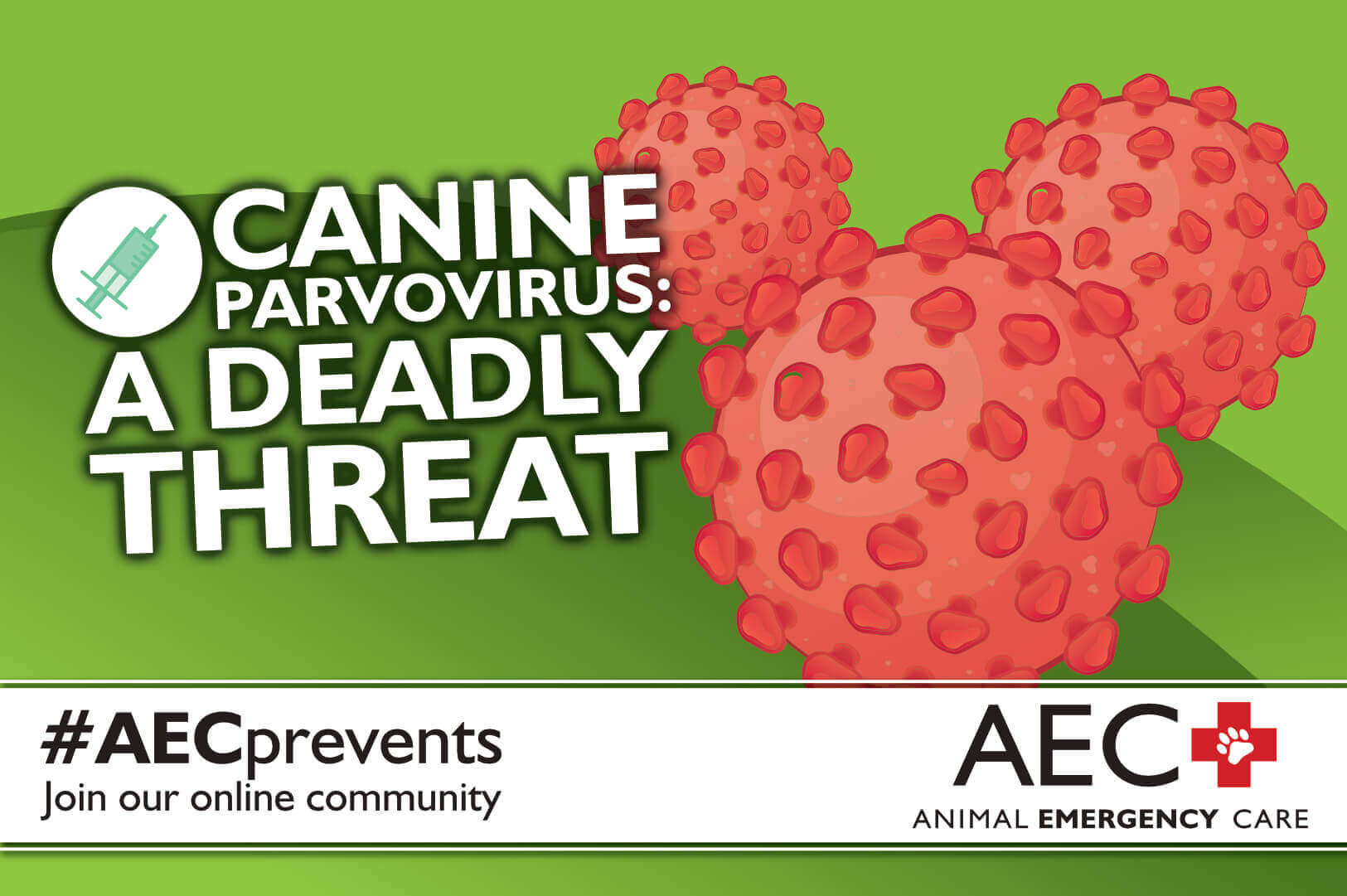Canine parvovirus instills fear in every puppy owner, as it should. This deadly disease is responsible for a serious illness and sometimes death in the most vulnerable pets—puppies who have not yet developed strong immunity. Although dogs of any age can contract the virus, puppies are at highest risk. Learn more about this devastating disease, how to recognize the signs, and how to protect your dog.
What is canine parvovirus?
Canine parvovirus causes a highly infectious viral disease typically referred to as parvo. Infected dogs shed the parvovirus in their feces, and the virus remains in the environment for months or even years since it is highly resistant to disinfectants and temperature changes. Dogs typically become infected when they ingest the virus, such as by eating grass or licking their feet after being outside. The virus can also contaminate inanimate objects such as food bowls, shoes, and clothing which infects other dogs. Puppies are highly susceptible to infection and suffer the most severe signs since their immunity has not yet fully developed.
Canine parvovirus attacks a dog’s intestinal lining which sloughs and sheds in the feces. Intestinal bacteria and toxins then enter exposed blood vessels and cause septicemia, a body-wide blood infection. Severe septicemia and dehydration cause serious illness and can be deadly, despite treatment.
In rare cases, canine parvovirus can attack the heart muscle of young puppies (i.e., younger than 8 weeks) causing heart failure and sudden death.
What are canine parvovirus signs?
Parvo signs develop secondary to severe intestinal damage and may include:
- Lethargy
- Decreased appetite
- Vomiting
- Severe, hemorrhagic diarrhea
- Severe dehydration
Many illnesses and infections, including intestinal parasites and gastritis, can cause vomiting and diarrhea in puppies which can quickly lead to life-threatening dehydration. Any puppy with these signs should be evaluated immediately by a veterinarian for a diagnosis and treatment as soon as possible.
How is canine parvovirus treated?
Canine parvovirus infections typically require hospitalization and intensive treatment. This may include:
- Intravenous fluids to correct dehydration and electrolyte imbalances
- Injectable medications to control nausea and vomiting
- Antibiotics to treat or prevent septicemia
- Invasive nutritional support
- Plasma transfusions
Infected dogs are treated in an isolation ward since parvo is highly contagious. Contamination is contained and they cannot pass the infection to other hospital patients. They are cared for by hospital team members wearing disposable gowns, gloves, and shoe coverings to prevent spread.
Affected dogs typically are hospitalized for several days to a week. With aggressive treatment, 70% to 90% of dogs with parvo will survive, but survival rates are significantly lower without treatment.
How can I plan ahead for an unexpected veterinary emergency?
No pet owner wants to be caught unprepared for a veterinary emergency and be forced to make life-or-death decisions based on finances. Long-term hospitalization and intensive treatment, whether for an infectious disease, a traumatic injury, or a sudden illness, can quickly become costly, so plan ahead for a potential emergency. Pet health insurance, purchased through trusted companies such as Trupanion, allows you to focus on your pet’s care and recovery instead of scraping together funds to cover treatment—or worse, not being able to proceed with treatment due to finances.
Alternative methods that can help pay for your pet’s treatment include:
- CareCredit — A credit card solely for medical expenses, Care Credit allows facilities to delay interest. Most veterinary hospitals will delay interest payments for six months on expenses more than $200.
- Scratch Pay — Scratch Pay offers a line of credit that is limited to one facility only, although you can apply for credit at multiple facilities. You can choose the repayment term, and interest rates vary according to the timeline and your credit history.
- Bank loans — Although private bank loans typically have higher interest rates, they may be your only choice in an emergency situation.
These options can help cover your pet’s medical costs in a pinch, but you will have less stress if you plan ahead and purchase pet medical insurance when you first adopt your pet because you will know they are covered.
How can I prevent canine parvovirus in my dog?
Fortunately, canine parvovirus is preventable with routine vaccination. Puppies should receive their first parvovirus vaccination at 6 to 8 weeks of age, as well as boosters every three to four weeks until they are at least 16 weeks old. Every puppy must receive the full vaccination series as partial vaccination may not produce adequate virus immunity and leave your pup vulnerable to infection. Some dog breeds such as rottweilers, Doberman pinschers, American pit bull terriers, German shepherd dogs, and English springer spaniels have a higher incidence of parvo, and may require additional vaccines. Your puppy should not leave your yard until their vaccinations are complete as parvovirus is ubiquitous in the environment, and exposure is highly likely.
Adult dogs should receive a vaccine booster at 1 year of age, and then once every three years.
Do not delay if your puppy develops vomiting and diarrhea. Contact your family veterinarian, or call us for help if needed. #AECprevents


